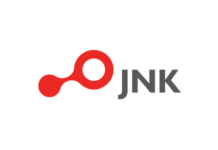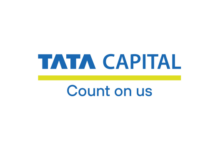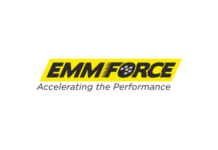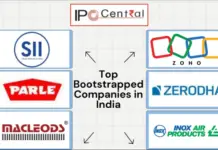With the launch of Cochin Shipyard’s maiden public offer next week, not only the long list of PSU IPOs will be expanded but it will also set the tone for further IPOs of government-owned companies. Important among these will be the general insurance players New India Assurance Company, United India Insurance, Oriental Insurance Company, National Insurance Company and reinsurer General Insurance Corporation of India (GIC). Earlier this year, the government cleared IPOs of all the five insurance companies. Coming back to Cochin Shipyard, the IPO will be closely watched by retail investors, given the discount of INR21 per share on the price band of INR424 – 432 per share. Through Cochin Shipyard IPO Review, we try to find out if the discount should be treated as a warning sign.
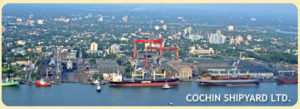
In total, 33,984,000 shares will be sold in Cochin Shipyard IPO through a mix of fresh shares and an Offer For Sale (OFS). This means the IPO will end up monetizing funds in the range of INR1,440.92 – 1,468.11 crore. This will make it the fourth largest equity IPO this year, after AU Small Finance Bank, Avenue Supermarts and Eris Lifesciences.
|
Cochin Shipyard IPO details |
|
| Subscription Dates | 1 – 3 August 2017 |
| Price Band | INR424 – 432 per share |
| Fresh issue | 22,656,000 shares (INR960.61 – 978.74 crore) |
| Offer For Sale | 11,328,000 shares (INR480.31 – 489.37 crore) |
| Total IPO size | 33,984,000 shares (INR1,440.92 – 1,468.11 crore) |
| Minimum bid (lot size) | 30 shares |
| Face Value | INR10 per share |
| Retail Allocation | 35% |
| Listing On | NSE, BSE |
Cochin Shipyard IPO Review: President of India
As of now, all the 113,280,000 shares in Cochin Shipyard are held by the President of India and nominees. Since the President is acting on the behalf of the government, the miniratna company is effectively controlled by the government. Out of the total, 11,328,000 shares will be sold by the President of India through the OFS.
The offer will also include sale of 22,656,000 newly-issued shares, amounting up to INR978.74 crore. Cochin Shipyard aims to use these funds towards setting up of a new dry dock within its existing premises, setting up of an International Ship Repair Facility (ISRF) at Cochin Port Trust area and for other general corporate purposes. Out of the total, INR443 crore will be used to establish the new dry dock while INR229.5 crore will be invested in the ISRF.
Cochin Shipyard IPO Review: Name says it all
Incorporated in 1972, Cochin Shipyard started shipbuilding operations three years later on the west coast of India. The shipyard’s strategic location – midway on the sea route connecting Europe, West Asia and the busy international maritime route of Pacific Rim – offers it a significant advantage. Subsequently, the company commenced ship repair operations in 1978. Over the last four decades, Cochin Shipyard has developed capabilities to produce vessels across broad classifications including bulk carriers, tankers, Platform Supply Vessels (PSVs), Anchor Handling Tug Supply vessels (AHTSs), launch barges, tugs, passenger vessels and Fast Patrol Vessels (FPVs).
Understandably, its key clients include the Indian Navy, the Indian Coast Guard and the Shipping Corporation of India (SCI). Nevertheless, it has also exported 45 ships to various commercial clients outside India such as NPCC, the Clipper Group (Bahamas) and Vroon Offshore (Netherlands) and SIGBA AS (Norway).
Nearly 82% of its operating revenues in the last five years came from shipbuilding while the remaining attributable to ship repair operations. Defence takes centerstage in both segments with a combined share of 72.6% in its average operating revenues during the last five years.
The company was conferred the ‘Miniratna’ status in 2008 by the Department of Public Enterprises.
Cochin Shipyard IPO Review: Financial Performance
As outlined above, Cochin Shipyard gets most of its revenues from its defence clients and this is the kind of business which is usually spread over a number of years. As a result, there is a high degree of revenue visibility in this business. Conversely, it has a downside too but more on that later. In these years, Cochin Shipyard has done well in terms of expanding operations. Its revenues increased from INR1,766.8 crore in FY2013 to INR2,208.5 crore in the latest year ended 31 March 2017. This is not a sharp growth by any standard but a steady one given the current downturn in the shipping industry. Except a decline in FY2015, revenues grew in all the remaining years.
In line with revenues, the company’s earnings also grew from INR266.3 crore in FY2013 to INR312.2 crore in FY2017. This translated into a net profit margin of 14.1% for the latest year. It is important to highlight that financial performance for FY2013 and FY2014 are according to I-GAAP and according to Ind AS in the following years.
|
Cochin Shipyard’s restated financial performance (in INR crore) |
||||||
| FY2013 | FY2014 | FY2015 | FY2016 | FY2017 | ||
| Total revenue | 1,766.8 | 1,858.9 | 1,660.4 | 2,096.9 | 2,208.5 | |
| Total expenses | 1,369.4 | 1,425.9 | 1,550.0 | 1,647.2 | 1,728.3 | |
| Profit after tax | 266.3 | 281.8 | 69.3 | 291.8 | 312.2 | |
| Profit margin (%) | 15.1 | 15.2 | 4.2 | 13.9 | 14.1 | |
Cochin Shipyard IPO Review: Should you board this ship?
As mentioned above, shipping industry works in multi-year cycles and these cycles can be quite brutal. Rather than overnight collapse, these cycles are characterized by bleeding, leading to slow and painful death of weaker players in downturns. For prospective investors, it helps to know the fate of ABG Shipyard which is crumbling under too much debt.
That said, Cochin Shipyard is in a much better shape. With total interest bearing liabilities of just INR123 crore as on June 2017, it is virtually debt free. On the contrary, it has cash in hand of nearly INR1,600 crore. For years, it has been averse to leverage and this has certainly helped its cause. Cochin Shipyard boasts of an order book of INR3,078.3 crore which offers good revenue visibility and at the same time, it has to say no to new business due to capacity constraints. Following the IPO, setting up of the International Ship Repair Facility is likely to expand Cochin Shipyard’s ship-repair capability by 70-90 ships per annum.
“We turn down 20-30 vessels for repairs a year due to lack of capacity,”
– Madhu S Nair, Chairman & Managing Director
In terms of valuations, the company’s earnings per share (EPS) of INR27.56 translates into a price by earnings (P/E) ratio of 15.67 on the upper end of the price band. This is quite reasonable for a profitable and dividend paying company. The company has boosted dividends to 8.97% and 7.65% in FY2017 and FY2016 (the Government of India being the sole beneficiary) from the earlier rate of 15% and while there is no certainty that the same will continue in future, it is difficult to imagine the scenario otherwise.
Overall, Cochin Shipyard IPO review reveals that the positives on its side, namely solid order book, healthy balance sheet, robust and profitable operations far outweigh the challenging industry scenario. On top of it, the discount of INR21 per share further sweetens the deal for small investors. Please head to this discussion page to see what the street is expecting out of the IPO.











